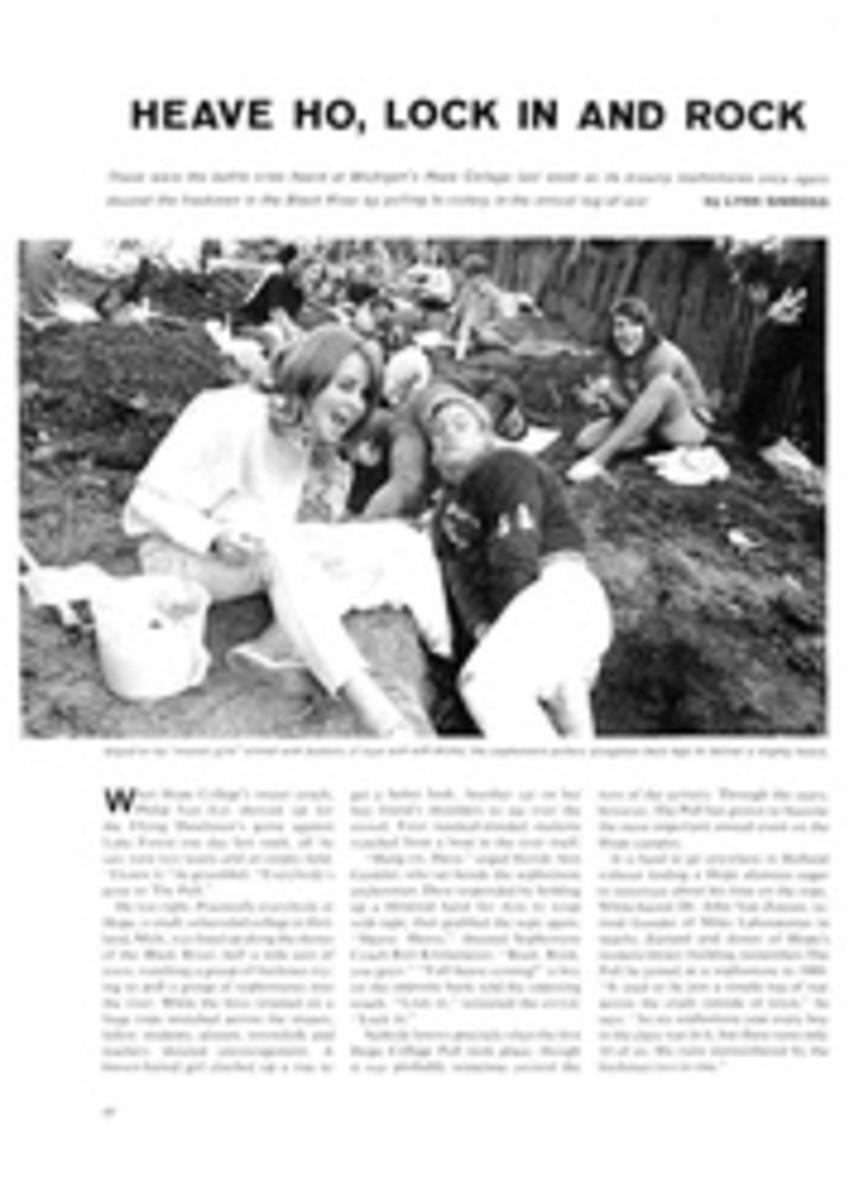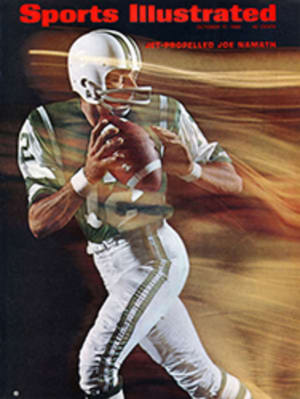
Anybody for Tenswim?
Being fond of both tennis and swimming, I have always been envious of people who have both a tennis court and a swimming pool. I know several such, and, while they never actually boast, they somehow manage to let it get around.
We have had our own tennis court for nearly 40 years. But up to this year we didn't have the pool to accompany it. Our property is only large enough to accommodate our court, our house and a small area for putting out garbage.
Acquiring adjacent property was out of the question, because we live in a rather exclusive neighborhood where prices would be prohibitive. There is a dry-cleaning establishment on our north boundary, and a bar and grill on the south. We are bounded east by a superhighway and west by railroad tracks.
So I kept discarding the idea of having a swimming pool, until—about half a year ago—I suddenly got a bright thought: Why not have a combination tennis court and swimming pool? I reasoned that our swimming court—or tennis pool—would have to be within the same area that our court occupied, viz., 120 feet by 60 feet from backstop to backstop and sidestop to sidestop.
This meant, of course, that the pool—or the court—would have to be built over—or under—the court or the pool. Definitely one or the other. First I contemplated building the pool over the court and finally rejected this for these reasons:
1) The pool would have to be emptied before it could be removed from the tennis court, and emptying the water would take too long, even using the biggest dipper in our kitchen.
2) If we emptied the water into, or onto, the dry-cleaning establishment, the bar and grill, the highway or the railroad tracks, it could cause bad feelings and possible lawsuits.
3) Our water is metered.
4) People don't want to swim first and then play tennis; they want to play tennis and then swim.
I had now arrived at the conclusion that the pool must be under the court—or that the court should be built over the pool. I can reason as closely as the next fellow.
The actual measurements of a doubles court are 78 feet long from baseline to baseline and 36 feet wide from sideline to sideline. The rest of the 120-foot-by-60-foot area enclosed by fences is used for back room and side room in running after tough shots, and I decided this same space would serve beautifully as an around-the-pool area for lolling and getting tanned. In short a 78-foot-by-36-foot pool would be just dandy.
I bought a pick and shovel and excavated this area to a depth of 10 feet at the deep end and 3 feet at the shallow. How I disposed of the dirt I prefer not to reveal. Realizing that the excavation might not be waterproof, I then got hold of a lot of plastic covers of the sort they used to wrap dry-cleaned suits and had my wife sew them all together to make one gigantic liner for the bottom and sides of the pool. Being next to the dry-cleaning establishment certainly helped, since we were able to persuade many of the customers to give us the covers before they took them home.
Next I put the giant plastic liner in the pool and filled it with water. The latter I accomplished by attaching a piece of hose to a faucet in the bar and grill one night after it had closed. I suppose this may have been a tiny bit unethical, but I reasoned that the establishment had been doing fine lately and would do even better when it gained additional patrons attracted by our fabulous swimming court, or tennis pool.
The next morning I went out to see how well our plastic pool liner had worked. Every drop of water was still there! But the catch was that I now had a swimming pool but no longer had a tennis court.
I went to a friend who is what is known technically as a scientific engineer and told him, "This is what I have in mind. Can you invent a sort of plastic that could be rolled out over the surface of a swimming pool and would serve as the surface of a tennis court?"
His ears perked up. "Sounds intriguing," he said. "Just a minute." He fetched a notebook and pencil and returned. "Go on," he requested.
"As I see it, the material should be very light—not over three or four pounds—and very thin. Perhaps not more than one-sixteenth of an inch thick."
"I'd recommend one-eighth to be on the safe side," he objected.
I grinned. "Good old Mac!" I said.
"The way I figure it," I went on, "the cover would roll out from under the two ends of the pool and then come together where the net posts are. To permit the court to be rolled into place and then rolled off again, the net posts might have an additional dingus that would function like another ratchet."
Mac looked up from his notes. "How do you spell that?" he asked.
"D-I-N-G-U-S," I said.
He slapped his notebook shut. "I guess that wraps things up," he said. "I hope you don't expect any rush job, though. I've been pretty busy lately."
I shook my head. "Any time in the next week or 10 days is fine," I assured him. "Any idea what the whole thing would come to—including installation?"
He thought for a moment or two, then named me a figure which sounded reasonable, and we shook on it.
True to his word, Mac showed up with the court within the specified time and installed it. He had invented a green plastic that looks like grass and has a bounce that I would say is about halfway between clay and grass.
"It is merely a combination of hexmethline, clorox, hetrasolluol, 2-4 tetrazin, epicenin and H[4]So¬π with a 13th carbon atom added, naturally, but let's just call it tenlon, for short."
"Catchy name," I said.
We've had it a month now, and it's been working to perfection. Not a bad bounce yet—and it's so cool on your feet! Furthermore, the pool works just as well as the court. Sometimes we roll the surface back but leave the tennis net up. Bet on water polo to be thrown out of the 1972 Olympics and water tennis to take its place. (I haven't yet decided whether there should be one or two serves and whether the flutter kick should be ruled illegal.)

